
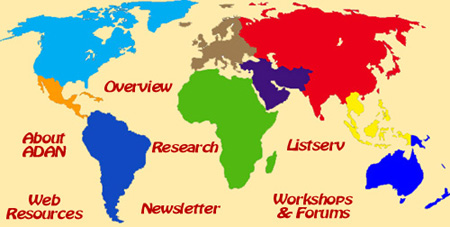
March 2025 NewsletterISSN: 1933-8651
In this issue we present the following news, announcements, and reviews:
March 2025 Issue of the
Journal of African Diaspora Archaeology and Heritage
Volume 14, Issue No. 1, of the Journal of African Diaspora Archaeology and Heritage (Taylor & Francis Press) presents the following articles. You can find these on the journal website (link).
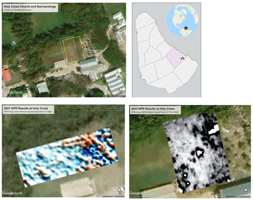
"'Their Veneration for Every Thing Connected with the Grave': Evidence of an Afro-Barbadian Burial Ground at Society Plantation, Barbados, West Indies," by Matthew C. Reilly, Brian Whiting
and Newlands Greenidge. Abstract: Few enslaved burial grounds have been identified throughout the Caribbean, notably on the southeasterly island of Barbados, which was home to one of the densest populations of enslaved peoples from its official settlement in 1627 to Emancipation in 1834. In this paper, we present archival, oral historical, and geophysical data evidencing a burial ground for enslaved and free Barbadians at Holy Cross Church, located on Society Plantation. Situated on the grounds of Christopher Codrington's seventeenth-century estate, which was later gifted to the Society for the Propagation of the Gospel, this burial ground, and its associated archival record, sheds light on proselytization efforts and burial practices on the island shortly before and after Emancipation. We present evidence of the location of burial grounds for Afro-Barbadians who chose the Christian rite of burial. We then offer alternatives to excavation that can properly honor and respect the individuals interred at the site. Keywords: African diaspora, slavery, Barbados, geophysics, burial grounds, remote sensing, GPR, EM (article link).
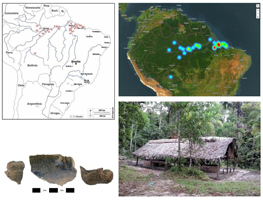
"Uncovering Histories: Archaeology and the Contemporary Struggles of Quilombola Communities in the Amazon," by Diogo Menezes Costa. Abstract: This article provides a comprehensive examination of the histories and contexts of various quilombola communities in the Amazon. It underscores the ongoing struggles for identity, territorial rights, and traditional lifestyles. The significance of agroforestry and sustainable resource management for the subsistence and cultural preservation of these communities is emphasized. The article delves into the archaeology of quilombos, highlighting the role of material culture studies in filling documentary gaps and revealing the everyday lives of enslaved Africans in the Amazon. It also addresses contemporary challenges, including urbanization and the complexities of land regularization processes in Brazil. Keywords: Historical archaeology, resistance, identity, sustainability, Amazon, quilombola communities, African diaspora, land rights (article link).

"More Complicated Than Meal, Meat, and Molasses: Historicizing Enslaved Rations in the Southern United States," by Matthew C. Greer. Abstract: Throughout the southern United States, enslavers issued weekly rations to the people they enslaved. While the types and amount of food varied across time and from region to region, there has not yet been a detailed study of rationing practices across the South. This article presents the first such study, exploring differences in the food Southern enslavers issued from the 1720s to the 1860s. It does so using a dataset of 596 quotes from 568 accounts by 533 formerly enslaved people, enslavers, travelers, and white abolitionists. Trends in these accounts show that weekly rations became larger and increasingly diverse throughout the eighteenth and nineteenth centuries and that important regional differences gave way to more uniform rationing practices throughout most of the South during the 1850s–1860s. Keywords: Slavery, food, rations, antebellum South (article link).
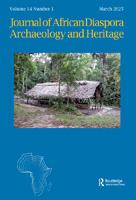
"Afro-diasporic Expressions in Contexts of Invisibility: A Study of a Cemetery and Afro-Argentine Dwellings of the Twentieth Century," by Alejandro Richard. Abstract: Since the nineteenth century, the construction of a white identity linked to Europe in Argentina has invisibilized Indigenous and African ancestry, denying and silencing non-European memories and ethnicities. In the province of Entre Ríos in the Rio de la Plata littoral, a border region since the colonial times, the discourse aimed at Europeanisation promoted the idea of a whitening process. This idea ignored the importance of the cultural constructs of Afro-descendant, Indigenous, and mestizo populations. The interdisciplinary research carried out in this territory contributes to the knowledge of the regional Afro-descendant past and present. I present the results of surveys and excavations around a cemetery and rural Afro-descendant dwellings. When put in dialogue with current memories and oralities, these results contribute to reinterpret and make visible the ontologies of African roots present in the mid-twentieth century. This revitalizes and provides tools for current processes of identity re-emergence. Keywords: Afro-Argentines, Afro-Argentinean archaeology, twentieth century, African diaspora, oralities, cemetery, dwellings, heritage (article link).
[Return to table of contents]
Open Access Articles from the
Journal of African Diaspora Archaeology and Heritage
The Journal of African Diaspora Archaeology and Heritage (Taylor & Francis Press) includes open access articles. You can find these on the journal website (link). Examples of articles currently available with free access include:
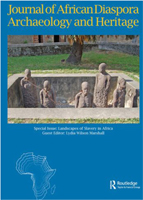
"Bioarchaeological Approaches to African Diasporas in the Twenty-First Century: Intercontinental and Global Legacies of Displacement," by Kristrina A. Shuler and Andreana S. Cunningham. Abstract: Bioarchaeological research offers a window into health and life experiences in the past, including the biocultural dimensions of social identities and structural inequalities experienced by enslaved and free Afro-descendants across the African diaspora. Given the long history of descendant communities and advocates contesting the authority of institutions to curate human remains in perpetuity, critical dialogues over the past several decades have stimulated new directions in the discipline of African diaspora bioarchaeology alongside increased engagement with Black scholarship and community and client-based collaborations. We build upon previous discussions and critiques to examine the current state of African diaspora bioarchaeology in global context in the early decades of the twenty-first century. We present a macro-level, chronological examination of published African diaspora and colonial African bioarchaeological research by region between 2001 and 2023 and conclude with a discussion of the current state of practices and engagement in the field and ethics of care. Keywords: African diaspora, Afro-descendants, slavery, emancipation, structural violence, bioarchaeology, human skeletal remains, ethics of care (article link).
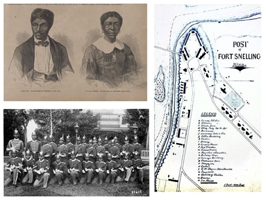
"Enslavement to Enlistment: Refiguring Opportunity for African Americans in the Military," by Katherine Hayes and Sophie Minor. Abstract: What does "opportunity" look like for African Americans in the United States military? While the military has been viewed as a vehicle for protecting freedom, it has done so in conditions of racial capitalism and settler colonialism. Through these analytical lenses, opportunity is generally idealized as property, but we propose that Black individuals associated with the military may have seen opportunity as relationality through land and place. We discuss Black constructions of opportunity at the military site of Fort Snelling in Minnesota during the nineteenth century, from enslaved individuals to enlisted Black Regulars garrisoned in the 1880s. Changing expectations of labor and social landscape shaped these opportunities, configured within structures of racism which were themselves adapting to the efforts of African Americans to seek opportunity. We offer archaeological materials and historical documents for potential use in public interpretation that attends to both oppression and creative pursuits of opportunity. Keywords: U.S. military, slavery, black regulars, settler colonialism, critical Indigenous studies (article link).

"Black Disability Politics in Black Military Service: A Perspective from Nineteenth-Century Fort Davis, Texas," by Laurie A. Wilkie and Katherine M. Kinkopf. Abstract: This article considers the role of the military in debilitating Black soldiers, focusing on the men who served in the Western Frontier immediately following the end of the Civil War, with particular attention to the men who served at Fort Davis, one of a string of posts located in West Texas. We frame this archaeological and archival research with critical disability studies to show how these men were motivated by what has recently been termed "Black Disability Politics," acting both individually and collectively for their community's care. The men, popularly known as the "Buffalo Soldiers," occupy an important space in heritage narratives around citizenship rights, valor, and masculine achievement among African-descended people. Understanding fully the circumstances they endured and overcame contributes nuance and dimensionality to that history, while also providing a lens through which to understand the challenges faced by women and Black and Indigenous People of Color in the military today. Keywords: Black disability politics, critical disability studies, historical archaeology,biopolitics, health (article link).
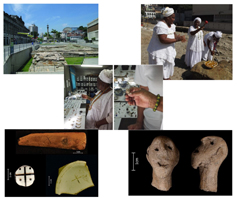
"Valongo, the Place of the Ancestors: Spiritual Practices among Enslaved Africans in Nineteenth-century Rio de Janeiro," by Tania Andrade Lima. Abstract: In 2017, UNESCO added Valongo Wharf to its list of World Heritage Sites. Located in Rio de Janeiro's Port Zone, the wharf is a place of memory associated with the transatlantic slave trade, which has been compared to other sites that have witnessed intense human suffering, such as Auschwitz, Hiroshima and Gorée Island, among others. This chapter explores the spiritual practices of the "wretched of the Earth," as Frantz Fanon named those Africans dehumanized by European colonialism. More specifically, it focuses on the Africans shipped to Valongo to be sold as slaves in Rio de Janeiro and who left vestiges of their spiritual beliefs, recovered through archaeological research. Here, these remains are analyzed from a decolonial perspective, born from the reflections of critical Latin American thinkers who reject the diverse forms of domination and oppression inflicted by Northern hemisphere powers on subaltern populations of the global South. Keywords: Valongo Wharf, urban slavery, spiritual beliefs, decolonial thought, diasporic communities, historical archaeology, archaeology of the African diaspora, descendant communities (article link).
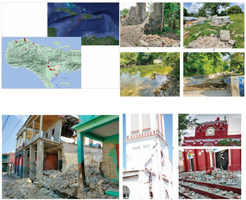
"Renegotiating and Theorizing Heritage in the Context of 'Disaster' in the Caribbean: The Entanglement of Haitian Disaster-Related Histories," by Joseph Sony Jean and Jerry Michel. Abstract: This article examines how cultural heritage is negotiated in disaster contexts. One month after the earthquake on August 14, 2021 in Haiti, we surveyed damaged heritage sites and spoke with residents in the South and Grande-Anse departments about their experiences and perceptions. Via this research, we found a lack of disaster preparedness and few existing response mechanisms for managing cultural heritage amidst disaster. This article argues for more attention to heritage theory and practice in relation to disaster. It also shares concrete information about our research and its outcomes to create a dialogue between research needs and actual research results. Local voices are fundamental to the planning and decision-making necessary to sustain the future of Haiti's cultural heritage. Heritage studies in the Caribbean need to formulate and theorize more cogent critical questions about heritage – in particular, about how it is envisioned in urgent times. Keywords: Heritage studies, archaeological heritage, disaster, Caribbean, Haiti, coloniality, local voices, urgency (article link).
[Return to table of contents]
2025 Archaeological Field Schools Addressing African Diaspora Subjects
2025 Archaeological Field Schools
Addressing African Diaspora Subjects
The following field school list includes announcements posted by the field school directors and others listed on various directories. The field school announcements that follow are presented below in alphabetic order by location.
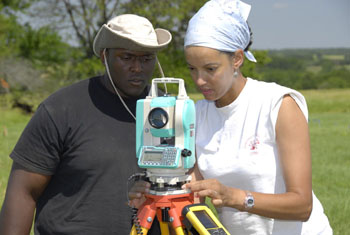
Caribbean: Providence Island Heritage Archaeology. Historical Archaeology, Ethnography & Community Oriented Outreach. Instructor: Dr. Tracie Mayfield, lecturer at University of Southern California. June 7 to July 2, 2025.
"Embark on a thrilling summer adventure that combines history, culture, and hands-on research on the captivating Colombian islands of Old Providence and Santa Catalina. Located in the heart of a stunning UNESCO biosphere reserve in the Western Caribbean, these islands boast a rich cultural tapestry shaped by their past as a global trade hub and centuries of shifting power dynamics, from English and Spanish administrations to encounters with pirates and privateers. Today, the islands are still home to the Native Raizal descendants of the original English colonists, enslaved Africans, and self-emancipated Maroon villagers. Join IFR's community-led project by digging into the islands' complex heritage and helping to preserve Native Raizal oral histories."
"Field school highlights: Untangle the islands' settlement timeline through hands-on archaeological field research; Connect with the vibrant local community and make a real impact by documenting their unique stories, art, and culture; Explore the stunning landscapes of the Western Caribbean." https://ifrglobal.org/program/caribbean-providence-island/.
Laurel Hill Plantation, South Carolina, Field School. May 12, 2025 to June 6, 2025. Instructor: Dr. David Palmer, Coastal Carolina University.
"This year's field school will be directed by Dr. David Palmer from May 12 to June 6, 2025 at the site of the former Laurel Hill Plantation at Brookgreen Gardens. Students in Coastal Carolina's ANTH 396, Historical Archaeology Field School, will participate in excavations of Laurel Hill, an antebellum rice plantation at Brookgreen Gardens, contributing to research about African American and early Gullah life in the Low Country. Based on previous field seasons, we will likely recover artifacts including pottery, glass, metal, and architectural remnants." https://www.coastal.edu/anthropology-geography/archaeologyfieldschool/.
Montpelier, Virginia Archaeology Field School. June 2, 2025 to July 3, 2025. Five Week Training Course in Archaeological Methods and Techniques.
"The Montpelier Archaeology Department has hosted field school since 1987. Over the past thirty-seven years, the program has grown to include students from a variety of universities, spanning the US and abroad. The field school is a five-week intensive course designed to give students training in field and laboratory techniques. Students will be introduced to excavation and survey methods, cutting edge archaeological recordation and digital data collection techniques (using ESRI's Field Maps, digital mapping, and mobile photogrammetry), artifact processing and basic curation practices. Students will also be introduced to the principals of Public Archaeology, and will be expected to engage with visitors to the site, members of the descendant community, and online. Students will also be expected to engage in discussions around contemporary museum practice with a focus on community based work and restorative justice."
"The 2025 season is focused on obtaining a better understanding of Walnut Hollow, a site located near the Temple and Ice House, where metal detector survey identified several structures believed to be homes for enslaved families, potentially dating from the late 18th century to the early 19th century." https://www.montpelier.org/archaeology-programs/field-school-paid-internships-volunteers/.
Thomas Jefferson's Poplar Forest, Virginia Archaeology. June 2, 2025 to July 11, 2025. Instructor: Eric Proebsting, Thomas Jefferson's Poplar Forest.
"Thomas Jefferson's Poplar Forest and the University of Virginia are pleased to offer the 34th annual Summer Field School in Historical Archaeology. The field school provides a foundation in the current methods and theories of historical archaeology and offers a solid introduction to the practical skills of site survey, excavation, recording, and laboratory procedures. Students will actively participate in our ongoing interpretation of archaeology to the public. In the summer of 2025, field school participants will excavate sites associated with Poplar Forest's enslaved residents and the plantation's early infrastructure."
"Sites that will be investigated will include searching for the location of a stable, slave quarter, and other structures associated with Jefferson's retreat home and plantation as well as later residents. This includes the opportunity to explore the archaeology of a standing brick quarter, which was built in the 1850s and continued to house African American residents in the years following emancipation. Students will work with the professional staff to better understand the lives of the individuals living and working at these sites by studying the material remains recovered from the summer's excavations. These sites will reveal new data about the daily lives of people who labored on this plantation during Thomas Jefferson's ownership and in the years that followed. This data can be compared with multiple sites that have already been excavated at Poplar Forest, allowing us to trace the plantation layout and the ways it changed at Poplar Forest over time. The study of this site will also provide new information for Poplar Forest's interpretive efforts that can be included in signage and tours that help our visitors better understand the landscapes and lives of the many people, both free and enslaved, that lived on this plantation."
"Students will spend 40 hours a week at Poplar Forest, with most of the time split between the excavation site and the archaeology laboratory. Strenuous daily activity will require physical endurance and good health. Participants will have the opportunity to work with state-of-the-art equipment and software, including a total station for recording field information, a database system containing both the archaeological artifact and context records, and a complete inventory of over 3,000 historical documents relating to Poplar Forest. The program includes weekly readings on topics in historical archaeology and lectures by staff and noted authorities covering such topics as landscape history, plantation life, and nineteenth-century material culture; the archaeology of the African Diaspora; environmental archaeology; professional opportunities in historical archaeology; and the role of public archaeology in our world today. As part of the program, students will also participate in a half-day workshop on architectural restoration and preservation philosophy. On-site work is supplemented by field trips to sites where historical archaeology is underway. Students will be asked to observe and evaluate strategies used by these sites to incorporate archaeology into their public interpretation."
"All students who take the field school will receive a scholarship from Poplar Forest. This grant covers half of the University of Virginia tuition charge." https://www.archaeological.org/fieldwork/thomas-jeffersons-poplar-forest-archaeology/.
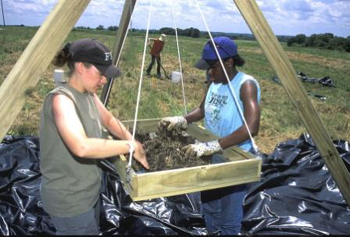
[Return to table of contents]
Call for Proposals:
Restorative Justice in Heritage Studies & Archaeology
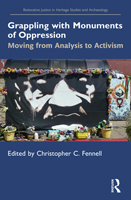
The Restorative Justice in Heritage Studies and Archaeology book series, published by Routledge Press and edited by Richard Paul Benjamin (University of Liverpool), Christopher C. Fennell (University of Illinois), and Nedra K. Lee (University of Massachusetts), seeks proposals for single-author, multi-author, or edited books. Restorative justice in heritage and archaeology embraces initiatives for reconciliation of past societal transgressions using processes that are multivocal, dialogic, historically informed, community based, negotiated, and transformative. This series will present works that promote the active and often unconventional ways that archaeologists, historians, and heritage scholars are contributing to a process of remaking. Our authors work to define and illuminate the best practices for restorative justice in these fields and to identify how practitioners and their collaborators are working to redress, reconcile, and remake contemporary society.
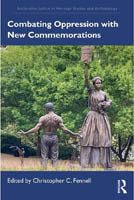
Such restorative justice efforts typically focus on multiple perspectives and modes of reconciliation, rather than a narrow vision of retribution and punishment. Reparation initiatives are often multivocal, layered, multiplex, and visionary in this way. Restorative justice initiatives often occur through such a collaborative process which entails relationship building and story-telling, accountability and truth-telling, and reparative engagement.
Our first two volumes in the series are Grappling with Monuments of Oppression: Moving from Analysis to Activism (link) and Combating Oppression with New Commemorations (link).
Interested in proposing a book for this series? Contact one of us: Nedra.Lee@umb.edu, Richard.Benjamin@liverpool.ac.uk, or cfennell@illinois.edu.
General guidelines for authors are available from Routledge Press.
Follow this initiative through our website, and on Facebook.
[Return to table of contents]
The Forgotten Women of Slave Revolts
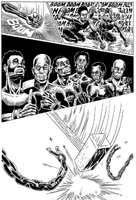 By Desiree Dawson
By Desiree Dawson
March 2025
Africa is a Country.
Rebecca Hall's "Wake" uncovers the hidden history of African women warriors and their role in resisting the transatlantic slave trade.
"In her graphic novel Wake: The Hidden History of Women-Led Slave Revolts, scholar and activist Rebecca Hall shifts the narrative of the transatlantic slave trade, highlighting the power of women during these times. Hall argues that the truth about women-led resistance to the slave trade has been hidden at the whims of the patriarchy. Examining the patriarchy not just in Western culture but all over the world, one finds similarities across cultures: Men are seen as the protectors, the carriers of strength, and, when necessary, the fighters. Women, meanwhile, are viewed as the nurturers, and although they are not always directly called so, they are often considered weaker than men. Hall maintains that the true history is filled with women warriors who had significant roles during slave revolts and in African tribes."
"For example, Hall writes about the Agojie of the Dahomey, renowned female warriors who were elite soldiers in a highly militarized society. According to Hall, these women were intelligent, aware of the dangers of war and the sacrifices required, and wielded power. Hall writes, 'In Dahomey, the Agojie were trained from a young age to wield weapons and lead in battle—a role that combined both physical strength and political acumen.' The Agojie fought for independence against Europeans who sought to conquer tribes. Uniquely, these warriors fought not only for their community members but also for those from neighboring tribes, as they knew that European slavery brought harm to all Africans. The Agojie were integral to the decision-making process and the strength of the ancient African kingdom. Their leadership and intelligence made them equipped for prominent political roles."
[Read this full article online >>>].
[Return to table of contents]
New Book
Unwritten Afro-Iberian Memories and Histories
Edited by Yolanda Aixelà-Cabré
Routledge Press
190 pp., ISBN-13 978-1032949963, 2024.
Description from the Publisher:
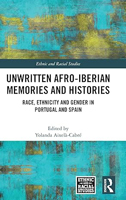 This book sketches out an innovative Afro-Iberian mosaic that puts forgotten memories and histories into circulation, constructing an Afro-Iberian past that is critical of the cultural racialization of Spaniards and Portuguese. It builds an early late modern and contemporary Afro-Iberian history and approaches African and Maghrebi experiences and memories in order to explain the close relation between race, class, ethnicity and gender in Portugal and Spain between 1850 and 2021.
This book sketches out an innovative Afro-Iberian mosaic that puts forgotten memories and histories into circulation, constructing an Afro-Iberian past that is critical of the cultural racialization of Spaniards and Portuguese. It builds an early late modern and contemporary Afro-Iberian history and approaches African and Maghrebi experiences and memories in order to explain the close relation between race, class, ethnicity and gender in Portugal and Spain between 1850 and 2021.
The book approaches the African presence in the Iberian Peninsula by identifying and documenting the traces of these population groups in Spain and Portugal. Cultural Studies, Anthropology and Sociology are some of the fields that weave together two stories in parallel that are little known: the similarities and differences in the social participation of Africans in Spain and Portugal; the degree of influence that the sociopolitical framework has had on Afro-Iberian coexistence and visibility; and the degree of historical depth that Iberian notions have about what is African. The volume promotes the study of unknown experiences of Africans in Europe that may allow future critical comparisons on the construction of what is Euro-African and Afro-European.
As a result, the contributions offer an excellent analysis of the similarities and differences between the narratives and practices of African otherness of two Western European countries marked by twilight overseas empires, favouring re-readings of common Iberian-African and Afro-Iberian historical recognition. This book was originally published as a special issue of Ethnic and Racial Studies.
[Return to table of contents]
New Book
A Short History of Black Craft in Ten Objects
By Robell Awake and Johnalynn Holland
Princeton Architectural Press
144 pp., ISBN-13 978-1797228549, 2025.
Description from the Publisher:
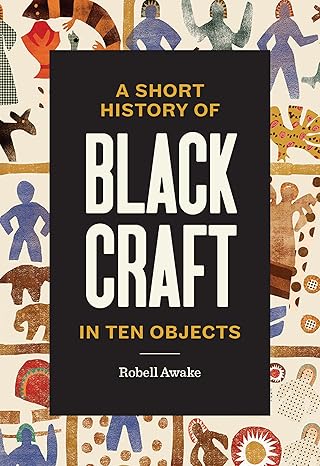 Ten beautifully illustrated essays tell the stories of handcrafted objects and their makers, providing inspiration and insight into Black history and craftsmanship. Black artisans have long been central to American art and design, creating innovative and highly desired work against immense odds.
Ten beautifully illustrated essays tell the stories of handcrafted objects and their makers, providing inspiration and insight into Black history and craftsmanship. Black artisans have long been central to American art and design, creating innovative and highly desired work against immense odds.
Atlanta-based chairmaker and scholar Robell Awake explores the stories behind ten cornerstones of Black craft, including: The celebrated wooden chairs of Richard Poynor, an enslaved craftsman who began a dynasty of Tennessee chairmakers; The elegant wrought-iron gates of Philip Simmons, seen to this day throughout Charleston, South Carolina, whose work features motifs from the Low Country; The inventive assemblage art and yard shows of Joe Minter, James Hampton, Bessie Harvey, and others, who draw on African spiritual traditions to create large-scale improvisational art installations.
From the enslaved potters of Old Edgefield, South Carolina, to Ann Lowe, the couture dressmaker who made Jacqueline Kennedy's wedding dress, to Gullah Geechee sweetgrass basket makers, to the celebrated quilters of Gee's Bend, A Short History of Black Craft in Ten Objects illuminates the work of generations of Black craftspeople, foregrounding their enduring contributions to American craft. Delving into the history of Black skilled artisans, estimated to have outnumbered white artisans five to one in the southern United States in the late 1800s, this unique art history book celebrates handcrafted objects that reflect the dynamic nature of Black culture. Luminous color illustrations by artist Johnalynn Holland highlight beloved craft objects and their makers, creating a fascinating volume to study and treasure.
[Return to table of contents]
New Book
Atlantic Cataclysm: Rethinking the Atlantic Slave Trades
By David Eltis
Cambridge University Press
442 pp., ISBN-13 978-1009518970, 2025.
Description from the Publisher:
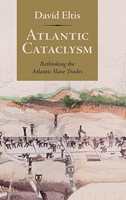 In this comprehensive work, David Eltis offers a two-thousand-year perspective on the trafficking of people, and boldly intervenes in the expansive discussions about slavery in the last half-century. Using new and underexplored data made available by slavevoyages.org, Eltis offers compelling explanations of why the slave trades began and why they ended, and in the process debunks long-held assumptions, including how bilateral rather than triangular voyages were the norm, and how the Portuguese rather than the British were the leading slave traders. Eltis argues that two-thirds of all enslaved people ended up in the Iberian Americas, where exports were most valuable throughout the slave trade era, and not in the Caribbean or the US. Tracing the mass involvement of people in the slave trade business from all parts of the Atlantic World, Eltis also examines the agency of Africans and their experiences in the aftermath of liberation.
In this comprehensive work, David Eltis offers a two-thousand-year perspective on the trafficking of people, and boldly intervenes in the expansive discussions about slavery in the last half-century. Using new and underexplored data made available by slavevoyages.org, Eltis offers compelling explanations of why the slave trades began and why they ended, and in the process debunks long-held assumptions, including how bilateral rather than triangular voyages were the norm, and how the Portuguese rather than the British were the leading slave traders. Eltis argues that two-thirds of all enslaved people ended up in the Iberian Americas, where exports were most valuable throughout the slave trade era, and not in the Caribbean or the US. Tracing the mass involvement of people in the slave trade business from all parts of the Atlantic World, Eltis also examines the agency of Africans and their experiences in the aftermath of liberation.
[Return to table of contents]
New Book
The African Ancestors Garden:
History and Memory at the International African American Museum
By Walter Hood
Monacelli Press
288 pp., ISBN-13 978-1580935845, 2024.
Description from the Publisher:
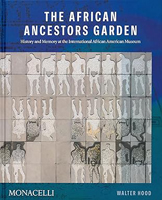 The African Ancestors Garden is the first book to be published in conjunction with the International African American Museum (IAAM) in Charleston, South Carolina. The museum's landscape design by Hood Design Studio, led by award-winning Walter Hood, exemplifies the museum's mission to reflect on its location at Gadsden's Wharf, the point at which nearly half of all enslaved Africans arrived in North America.
The African Ancestors Garden is the first book to be published in conjunction with the International African American Museum (IAAM) in Charleston, South Carolina. The museum's landscape design by Hood Design Studio, led by award-winning Walter Hood, exemplifies the museum's mission to reflect on its location at Gadsden's Wharf, the point at which nearly half of all enslaved Africans arrived in North America.
With contributions by figures critical to the realization of the International African American Museum, this significant book presents the intensive site research and concepts that went into the distinct spaces at the museum, including an infinity reflecting pool and an ethnobotanical showcase of African plants brought to North America though that landing. Hood's design response to these historic grounds addresses memory, tragedy, and culture, a moving homage to the living Charleston community and the African diaspora at large.
Hood Design Studio, led by MacArthur 'Genius' Grant-winner Walter Hood, is at the forefront of the expanding field of social activism through design, and this book allows us a detailed overview of the conceptualization and creation of a remarkable and deeply meaningful landscape, proposing a way of designing public spaces and cultural institutions that embody the African American experience.
[Return to table of contents]
New Book
Apostle of Liberation:
AME Bishop Paul Quinn and the Underground Railroad
By Cheryl Janifer LaRoche
Rowman & Littlefield Publishers
240 pp., ISBN-13 978-1538198117, 2025.
Description from the Publisher:
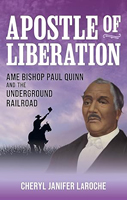 William Paul Quinn's untold story is a missing piece of American history. His deep but little-known involvement with the Underground Railroad is one of the most fascinating subplots of a remarkable life. More than any other prelate of the African Methodist Episcopal Church, or AME Church, Quinn (1788-1873) guided the faithful throughout the perilous pre-Civil War years, sanctioning escape from slavery while avoiding suspicion and, by all appearances, upholding the law. Quinn helped his followers navigate the hardships of slavery, as well as the demands of freedom in the post-Civil War world.
illuminates Quinn's significance, demonstrating why his life and courageous efforts deserve more attention—and more appreciation. It also explores, in depth and for the first time, the eight and a half years Quinn spent in New York City. It was during this time that Quinn experienced the major conflict of his life with AME founder Bishop Richard Allen over Quinn's independent activities in New York. Much to Bishop Allen's frustration, Quinn—one of the AME Church's "Four Horsemen" along with Allen—associated with ministers of other denominations, collaborated with the city's African American civic leaders, rescued freedom seekers, and operated beyond Allen's reach. Quinn later established a 150-member independent church in the city, earning Allen's wrath and a five-year exile from the church.
William Paul Quinn's untold story is a missing piece of American history. His deep but little-known involvement with the Underground Railroad is one of the most fascinating subplots of a remarkable life. More than any other prelate of the African Methodist Episcopal Church, or AME Church, Quinn (1788-1873) guided the faithful throughout the perilous pre-Civil War years, sanctioning escape from slavery while avoiding suspicion and, by all appearances, upholding the law. Quinn helped his followers navigate the hardships of slavery, as well as the demands of freedom in the post-Civil War world.
illuminates Quinn's significance, demonstrating why his life and courageous efforts deserve more attention—and more appreciation. It also explores, in depth and for the first time, the eight and a half years Quinn spent in New York City. It was during this time that Quinn experienced the major conflict of his life with AME founder Bishop Richard Allen over Quinn's independent activities in New York. Much to Bishop Allen's frustration, Quinn—one of the AME Church's "Four Horsemen" along with Allen—associated with ministers of other denominations, collaborated with the city's African American civic leaders, rescued freedom seekers, and operated beyond Allen's reach. Quinn later established a 150-member independent church in the city, earning Allen's wrath and a five-year exile from the church.
This remarkable missionary's life embodies the struggles and challenges that shaped the lives of nineteenth-century Black leaders, and those who followed them. Apostle of Liberation explores the historical figure as well as the man of God—his spiritual gifts, his character and uniqueness, as well as his many strengths and failings. The book carefully lays out his trials and triumphs, and the magnitude of his accomplishments in the face of legally sanctioned national opposition, denominational fights and schisms, and devastating Supreme Court decisions. Combining AME Church history, the story of the Underground Railroad, the origins of African American educational efforts, and inspiring anecdotes of westward migration and community engagement, Apostle of Liberation offers an original and distinctive contribution to American religious history.
[Return to table of contents]
New Book
Folk Music and Song in the WPA Ex-Slave Narratives
By John Minton
University Press of Mississippi
792 pp., ISBN-13 978-1496854278, 2025.
Description from the Publisher:
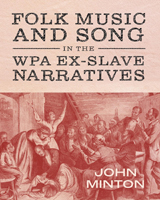 Between 1937 and 1940 fieldworkers in the Works Progress Administration's Federal Writers' Project interviewed around 3,500 formerly enslaved people in North America, resulting in roughly 20,000 pages of still unedited and inadequately indexed typescript. These accounts-the WPA ex-slave narratives-are the most substantial collection by far of folklore and oral history gathered directly from enslaved people in America. It is arguably the single greatest body of African American folklore extant, and a significant portion is devoted to folk music and song. This book considers this treasure trove in all its relevant social, cultural, and historical contexts.
Between 1937 and 1940 fieldworkers in the Works Progress Administration's Federal Writers' Project interviewed around 3,500 formerly enslaved people in North America, resulting in roughly 20,000 pages of still unedited and inadequately indexed typescript. These accounts-the WPA ex-slave narratives-are the most substantial collection by far of folklore and oral history gathered directly from enslaved people in America. It is arguably the single greatest body of African American folklore extant, and a significant portion is devoted to folk music and song. This book considers this treasure trove in all its relevant social, cultural, and historical contexts.
Nineteenth-century Black folk music developed against the backdrop of North American slavery, the American Civil War, Emancipation, the Federal occupation of the South, and a successful white supremacist paramilitary and political insurgency that led to Federal withdrawal, officially sanctioned racial terror, and Southern apartheid. The WPA ex-slave narratives describe that history in remarkable detail. Despite their inestimable value, most of the ex-slave narratives remained unpublished until the late 1970s, being almost unknown except to folklorists. Even after publication, the collection's sheer size was a barrier.
Quoting extensively from the narratives and exhaustively annotated and indexed, this volume provides readers with detailed explanations and full references for every musical item or tradition featured in the ex-slave narratives. John Minton covers instrumental music and social dancing, spirituals and hymns, singing games and lullabies, ring plays and reels, worksongs, minstrel songs, ballads, war songs, slavery laments, and much, much more. Written for both specialists and general readers, with 134 illustrations, the book also offers a general overview of the ex-slave narratives, their contents, creation, and relation to the field of African American folklore as a whole.
[Return to table of contents]
New Book
The Bonds of Kinship in Dahomey:
Portraits of West African Girlhood, 1720–1940
By Jessica Catherine Reuther
Indiana University Press
280 pp., ISBN-13 978-0253071422, 2025.
Description from the Publisher:
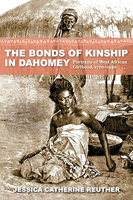 From the 1720s to the 1940s, parents in the kingdom and later colony of Dahomey (now the Republic of Benin) developed and sustained the common practice of girl fostering, or "entrusting." Transferring their daughters at a young age into foster homes, Dahomeans created complex relationships of mutual obligation, kinship, and caregiving that also exploited girls' labor for the economic benefit of the women who acted as their social mothers.
From the 1720s to the 1940s, parents in the kingdom and later colony of Dahomey (now the Republic of Benin) developed and sustained the common practice of girl fostering, or "entrusting." Transferring their daughters at a young age into foster homes, Dahomeans created complex relationships of mutual obligation, kinship, and caregiving that also exploited girls' labor for the economic benefit of the women who acted as their social mothers.
Drawing upon oral tradition, historic images, and collective memories, Jessica Reuther pieces together the fragmentary glimpses of girls' lives contained in colonial archives within the framework of traditional understandings about entrustment. Placing these girls and their social mothers at the center of history brings to light their core contributions to local and global political economies, even as the Dahomean monarchy, global trade, and colonial courts reshaped girlhood norms and fostering practices.
Reuther reveals that the social, economic, and political changes wrought by the expansion of Dahomey in the eighteenth century; the shift to "legitimate" trade in agricultural products in the nineteenth century; and the imposition of French colonialism in the twentieth all fundamentally altered—and were altered by—the intimate practice of entrusting female children between households. Dahomeans also valorized this process as a crucial component of being "well-raised"—a sentiment that continues into the present, despite widespread Beninese opposition to modern-day forms of child labor.
[Return to table of contents]
Book Review
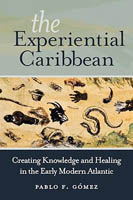
Pablo F. Gomez. The Experiential Caribbean: Creating Knowledge and Healing in the Early Modern Atlantic. Chapel Hill: University of North Carolina Press, 2017. 314 pp. ISBN 978-1-4696-3087-8.
H-Net Book Review, published by H-Caribbean, https://networks.h-net.org/h-caribbean (January 2025).
Reviewed for H-Caribbean by Susanne Lachenicht (Universitaet Bayreuth).
The Experiential Caribbean: Creating Knowledge and Healing in the Early Modern Atlantic is an intriguing book, and an important one. Starting from the question of how people in the early modern Caribbean, more precisely during the long seventeenth century, created knowledge about the natural world, bodies, and healing practices, Pablo F. Gomez analyzes the "spiritual, analytical, experiential, descriptive, and classificatory practices" that ritual healers developed in this specific temporal and spatial context. His major argument is that in the Caribbean "experiential knowledge" became the dominant form and that it was "a new type of knowledge" (p. 3). Against the background of the varieties of epistemes, healers, and healing practices in other parts of the world, I am unsure about this claim, though. While the book demonstrates the experiential character of knowledge creation and healing in the Caribbean, the author's claims to newness cannot be proven, as comparisons with Indian Ocean or East Asian worlds are missing. However, Gomez convincingly shows the vast array of epistemes, or knowledge systems, that came together in the colonial Caribbean's worlds and points to how the confrontations of these knowledge systems from Africa, the Americas, and Europe were used to heal people.
In seven chapters, the author reconstructs case studies from which he draws his theses. Gomez relies on sources from the Inquisition Office in Cartagena de las Indias but also makes ample use of archival materials from Spanish, Colombian, Italian, Portuguese, Dutch, and US archives. Insights into healing practices and rituals mostly come from the initial court appearances where the defendants were required to talk about their belief systems, their origins and social environments, the rites they practiced, and the medicine they prepared and administered. Based on these records, Gomez thus takes hold of some one hundred ritual practitioners in the Caribbean of diverse origins, equipped with various belief systems. How much the Inquisition records reflect the worldviews of the accused and how much the records also owe to the context of the Inquisition, the situation in court, or the judicial transcript as a specific medium are questions that are unfortunately not under consideration. Here, some more source critique would have been helpful.
Chapter 1 looks into the Caribbean as a colonial space, where people of diverse origins and social status mingled. The chapter is also about demographics and the specific makeup of Caribbean worlds in the seventeenth century. It inquires into the origins and many lifeworlds from which healers came and into healing as a highly competitive marketplace. The next chapter introduces a "geography of health and disease" of the places of healing; it offers intriguing insights into the presence of ritual healers of African, Amerindian, and mixed descent in such colonial spaces as convents, Spanish hospitals, and houses of colonial governors and administrators where ritual healers continued to practice after having been interrogated and sentenced to penitence or prison by the Inquisition (p. 40). Chapter 3 further delves into ritual healers' structures of mobility, specifically how this mobility facilitated knowledge exchange and processes of translation, adaption, and innovation through oral and written exchange or the ritual's performative act. The fourth chapter is about the role the senses, that is, sounds, smells, and touch, played in these healing practices and the production of new ways of sensing the world and the human body. The following chapter deals with materia medica that healers of all faiths used in the Caribbean; there were, as the author is able to show, astonishing parallels when comparing Spanish surgeons, doctors, and convents' pharmacies with those of ritual healers. Through the great variety of healing practices, the Caribbean seems to have produced new standards in healing shared by healers from different belief systems. Chapter 6 is about the "wondrous" or the "supernatural" in Caribbean healing practices, not only when it comes to ritual healers but also when looking into Spanish practices of healing: the wondrous is not absent from Galenian, Aristotelian, and Christian knowledge systems and ways of healing. The last chapter treats the overcoming of old dogma through ritual healing and the "truths of healing": Paracelsus's "He who heals is right" seems to have been a common belief in Caribbean worlds despite or just because of the persecution and inquisition of some of its ritual healers. Gomez argues that both ritual healing and the new sciences helped overcome dogma and brought about new ways of sensing the world, of understanding and healing the human body.
Methodologically, the book reconstructs specific case studies that center on one or several individual healers from which the author draws insights into structures and processes. Gomez convincingly shows how ritual healers with various backgrounds made use of different ontologies and epistemologies, merged these knowledges, and made them acceptable for the many people living in Caribbean worlds, including Spanish colonizers. As mentioned above, many case studies illustrate the tensions between the Inquisition's stance on "sorcery" and "witchcraft" and the usage of ritual healers and their knowledge: While the Inquisition persecuted and, at times, condemned "sorcerers" among the vast group of ritual healers, Spanish bishops, governors, and administrators made use of and depended on the same ritual healers when it came to curing and healing their sickness and those of members of the household, soldiers, and enslaved Africans. European barbers, surgeons, doctors, nuns, and monks also readily integrated body knowledge, healing practices, and materia medica from the diverse African, Amerindian, and creole cultures into their own healing practices, as the vast amount of natural histories of the early modern period also shows. European healing practices were also a blend of a great variety of epistemes: Galenian, Aristotelian, Christian, Paracelsian; natural medicine as practiced by convents and laywomen and laymen; the developing new sciences, based on "experience" and "evidence"; and older popular belief systems from which European healers could choose. This European blend of healing practices included the divine and metaphysical but also occultist and obscurantist endeavors on the part of the healers; it blended easily with knowledge systems and healing practices from other parts of the world.
The book is also convincing as it abstains from translating the Caribbean's early modern epistemologies into "modern Western bio-medical epidemiological concepts and classifications of disease" and, even more importantly, from judging early modern Caribbean belief systems and experiences from a scientific/rational perspective (p. 40). This enables the author to unearth some of the hidden or forgotten aspects of the varieties and blends of knowledge about healing in the seventeenth-century Caribbean on which much of the modern sciences and medicine have relied in their development. The new sciences and medicine as one important element were therefore by no means just the fruit of scholarly endeavors in Europe but also the result of a vibrant competition with varieties of epistemes and practices of healing throughout the Caribbean worlds.
[Citation: Susanne Lachenicht. Review of Gomez, Pablo F, The Experiential Caribbean: Creating Knowledge and Healing in the Early Modern Atlantic. H-Caribbean, H-Net Reviews. January, 2025. H-Net permits the redistribution and reprinting of this work for nonprofit, educational purposes.]
[Return to table of contents]

©2025 African Diaspora Archaeology Network
Copyright and all rights reserved by
individual authors for each article.
Please send comments, suggestions,
or questions to the editor
Last updated: March 31, 2025
Text only menuSearch
|



